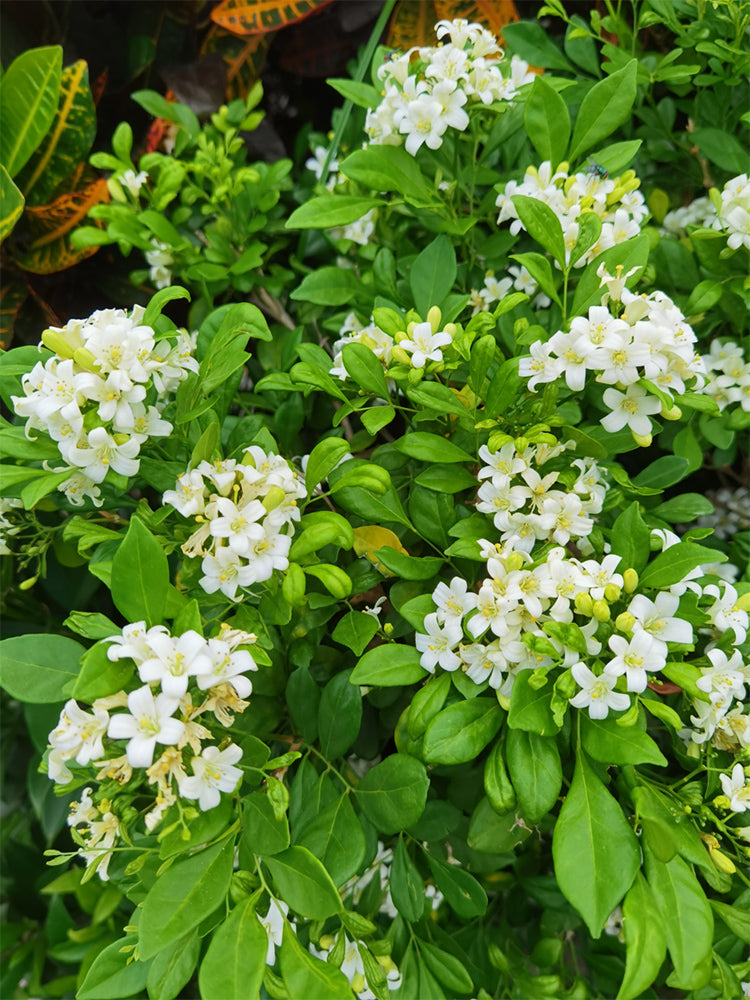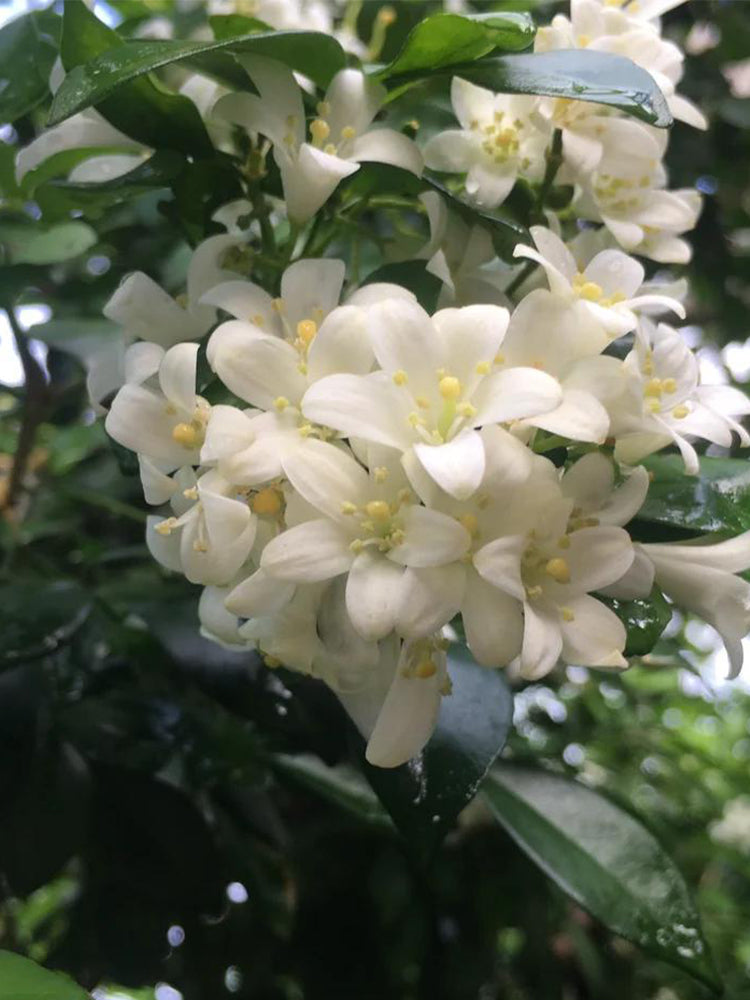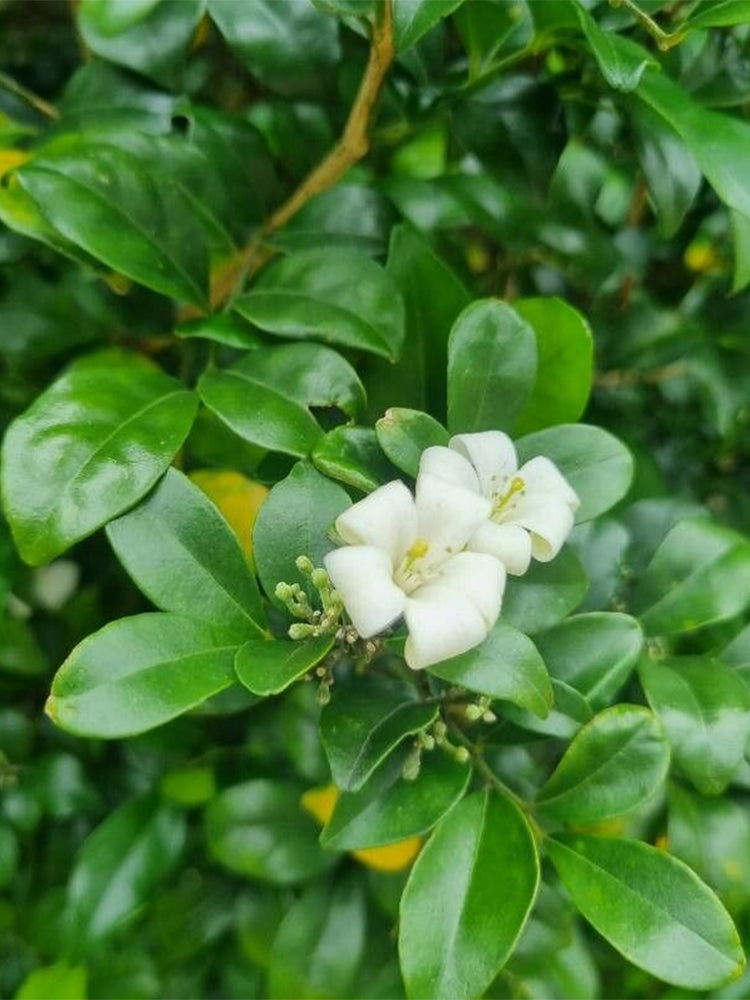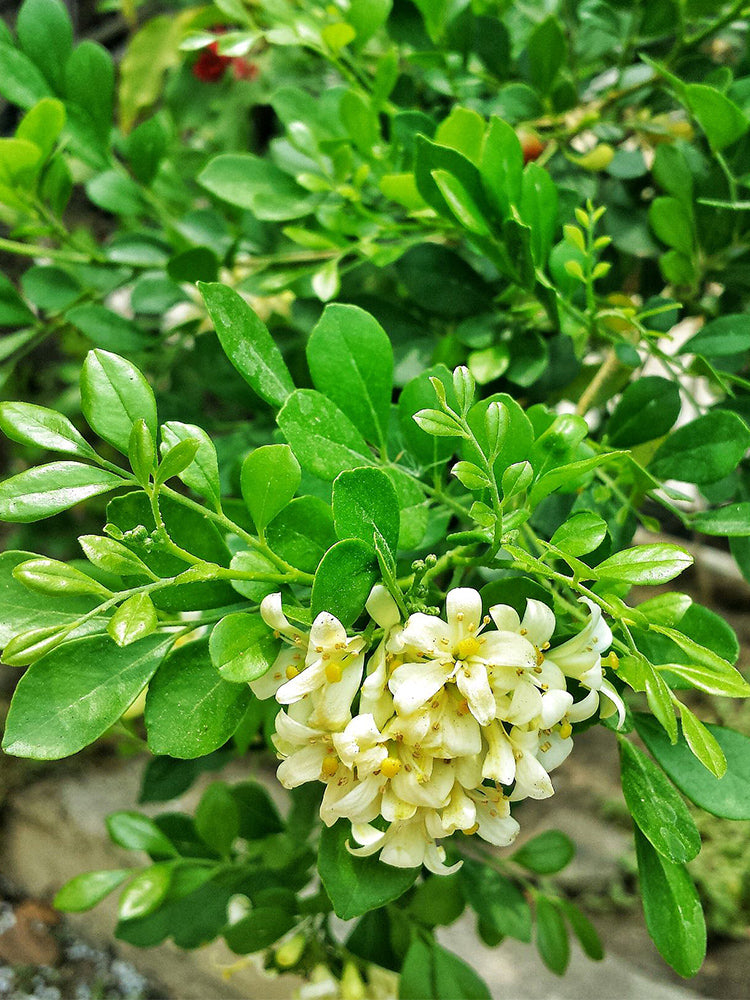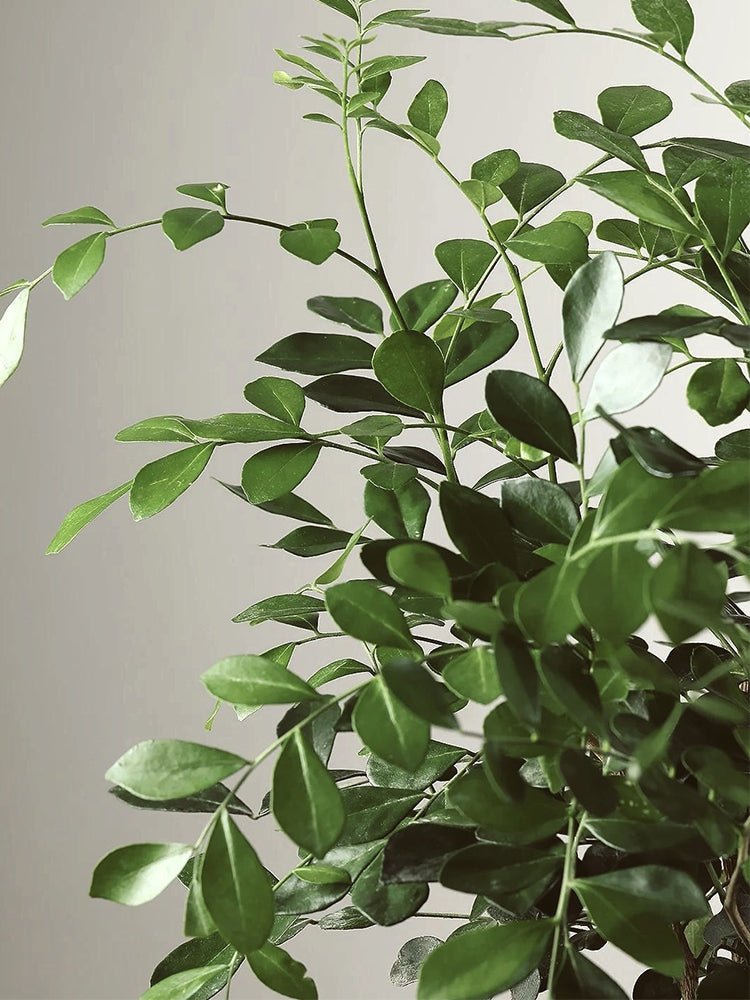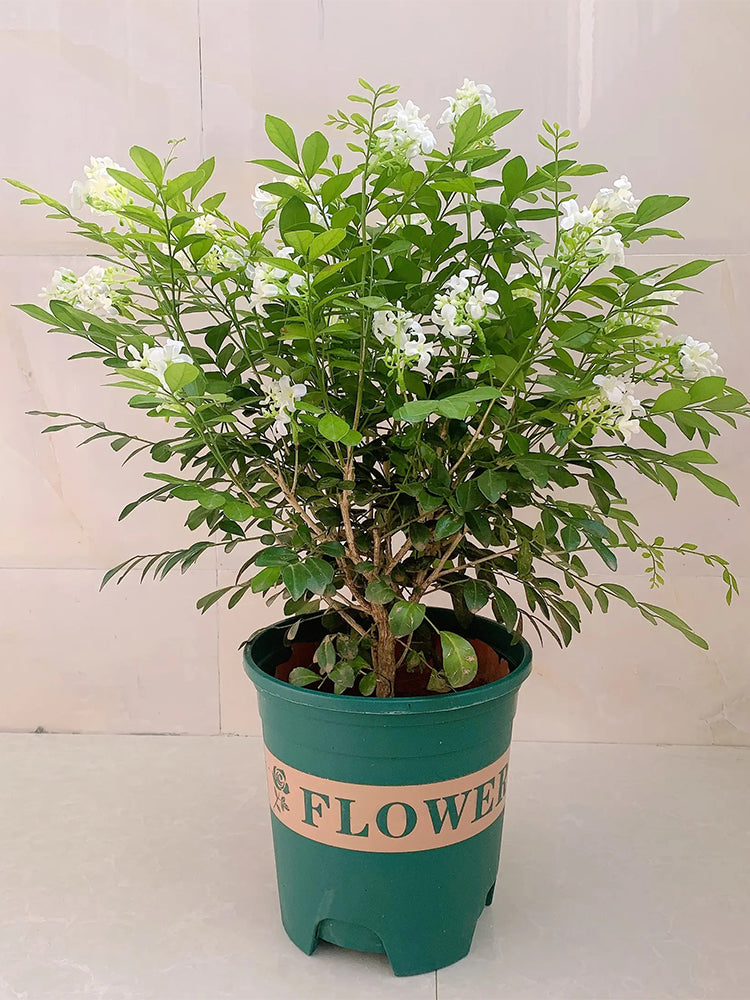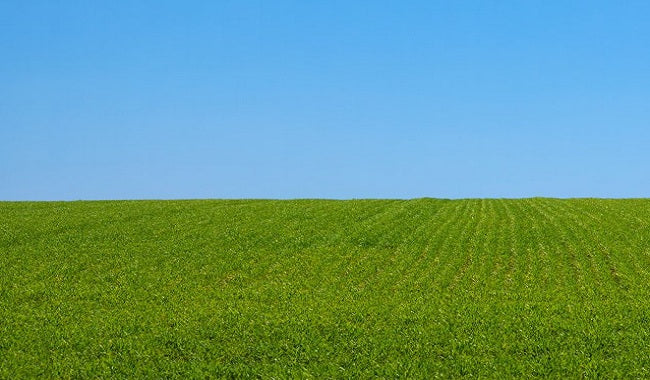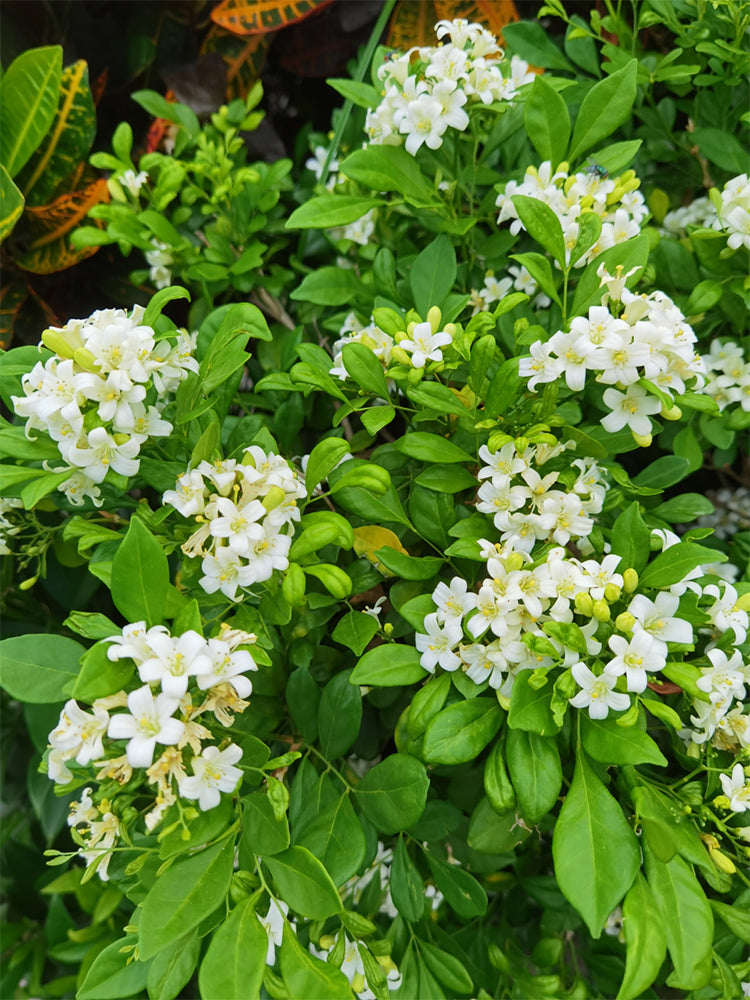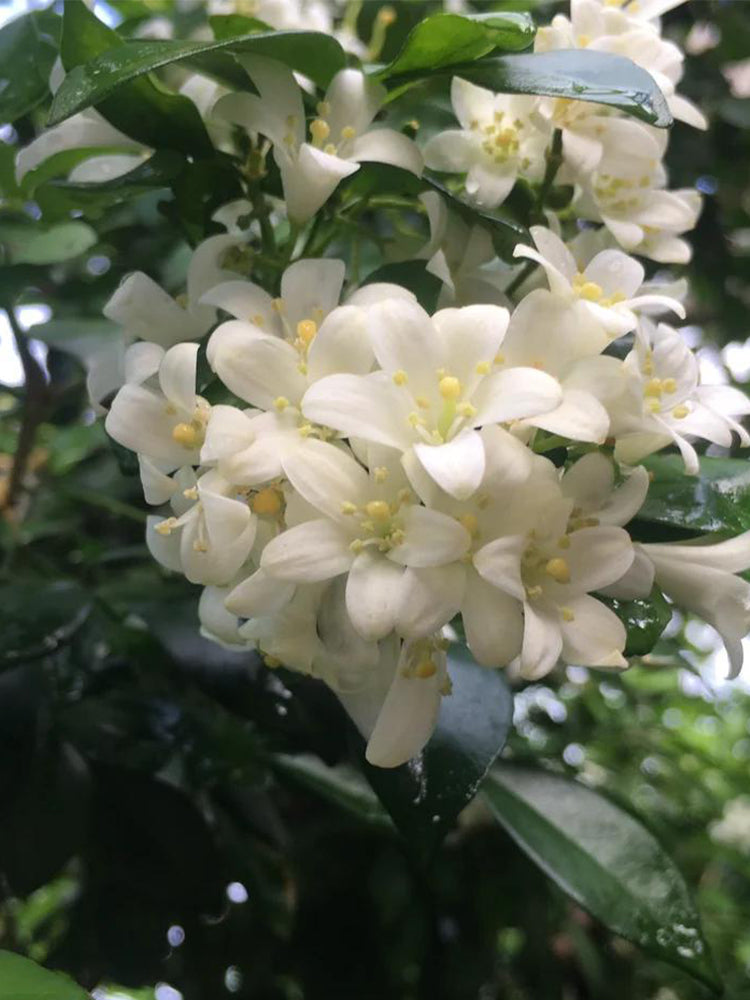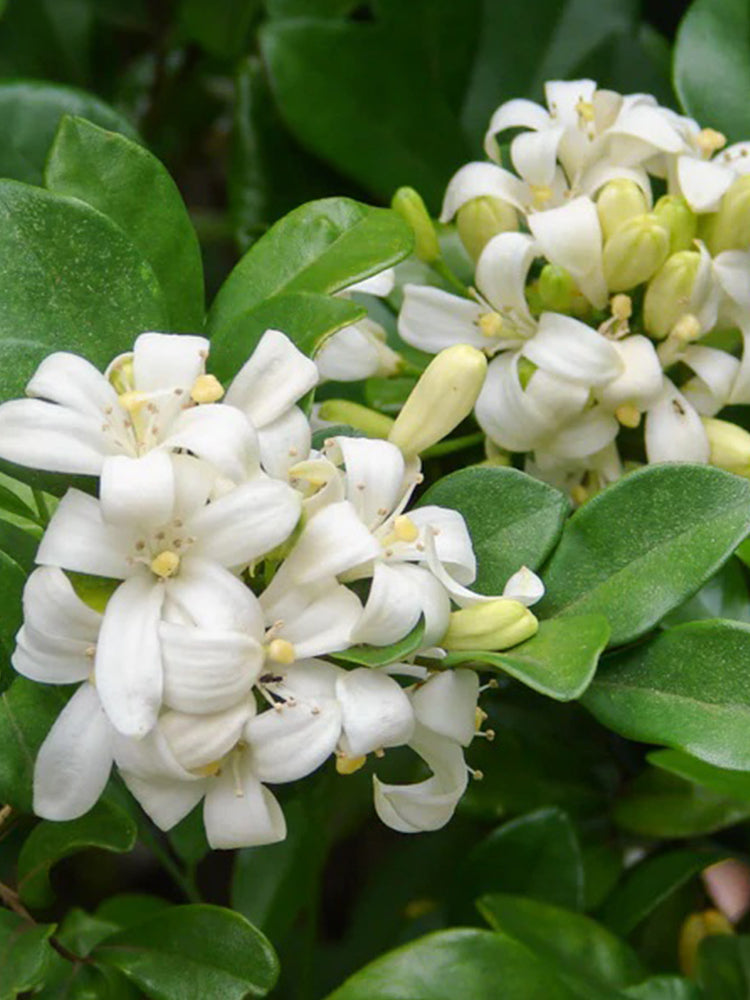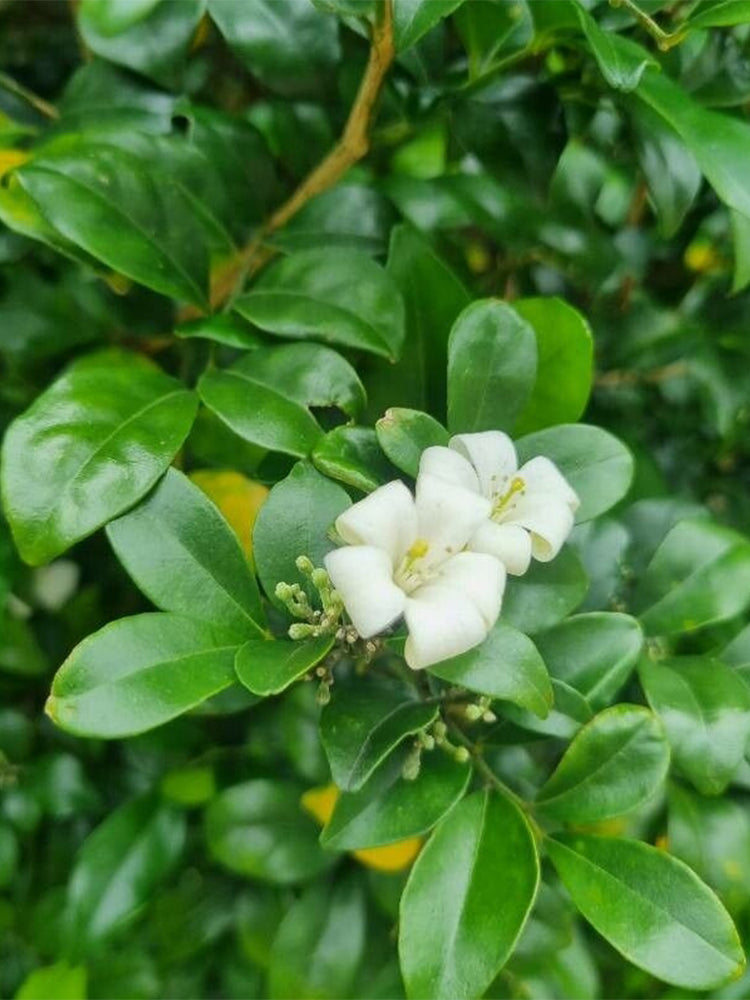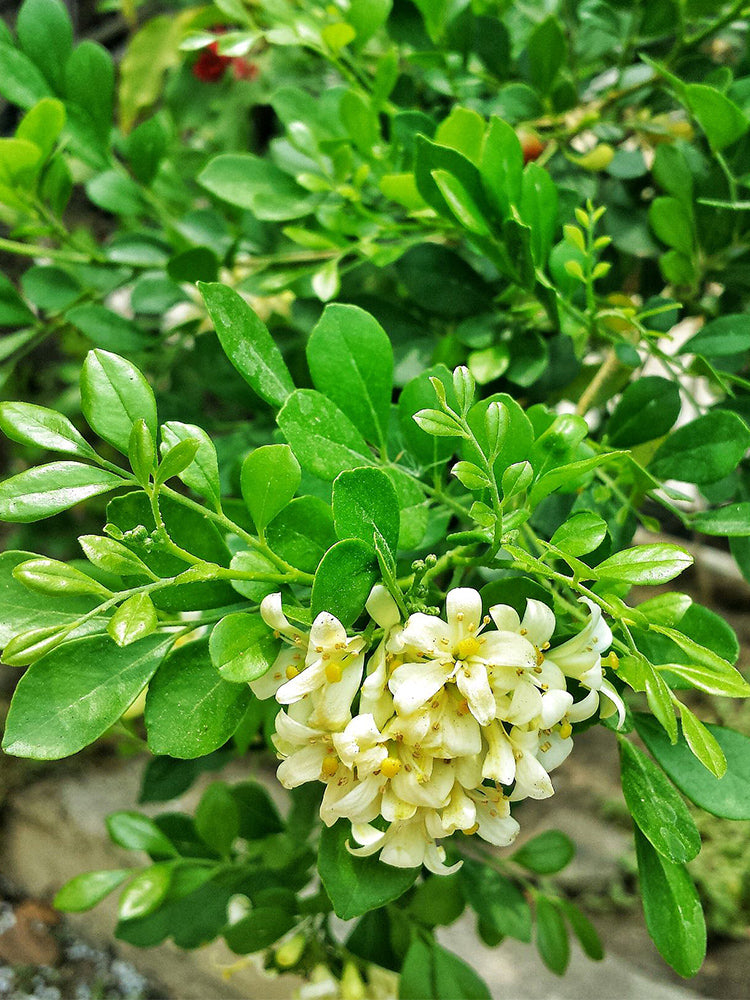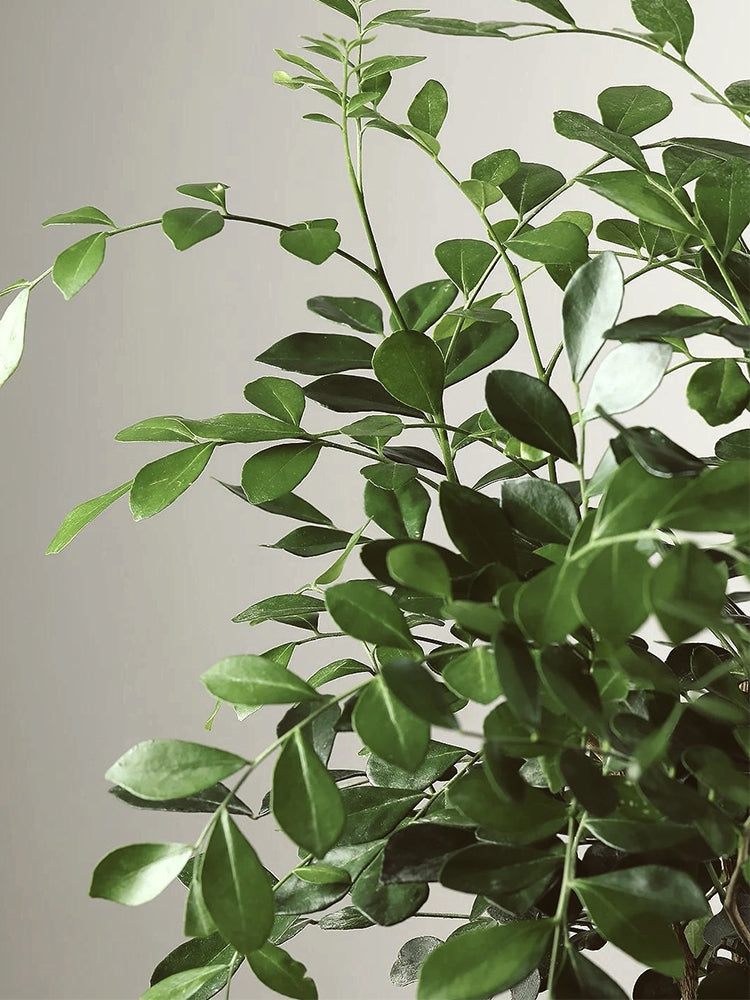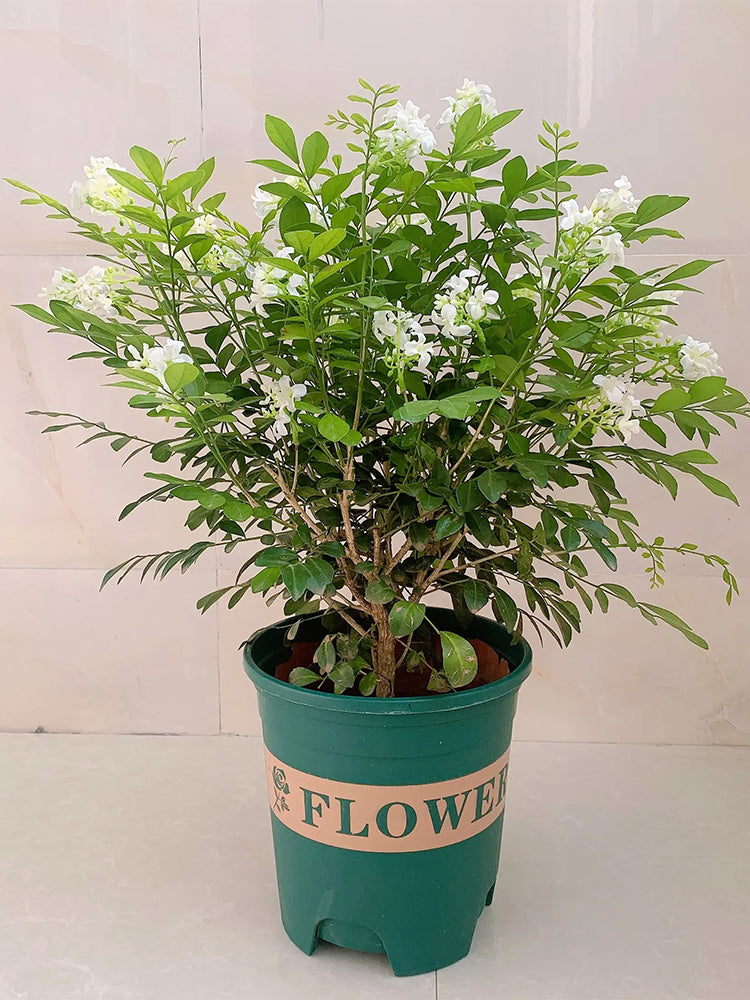BELLFARM
Orange Jasmine (Murraya paniculata)
Sale
Sold out
Regular price
$4.99 USD
Regular price
$8.99 USD
Sale price
$4.99 USD
Unit price
per
Couldn't load pickup availability
-
5-14 Days delivery.
-
Ship out within 24 hours.
Key Characteristics:
- Orange Jasmine (scientific name: Murraya paniculata) is an evergreen shrub or small tree of the Rutaceae family, reaching heights of up to 8 meters, with potted plants growing to 1-2 meters. It has numerous branches, with leaflets that are obovate or obovate-elliptical, and petioles that are short or nearly sessile. Its inflorescences are corymbose or paniculate cymes, terminal or sometimes axillary. The flowers are white and fragrant; the fruits are orange-yellow to vermilion, broadly ovate or elliptical. It blooms from April to August, and sometimes also blooms in autumn; the fruiting period is from September to December. It grows in areas at an altitude of 700-1400 meters, often distributed on relatively moist flatlands, gentle slopes, and small hills. It prefers sufficient sunlight, is also tolerant of partial shade, and likes warmth, with the most suitable growth temperature being 20-32°C. Orange Jasmine has multiple values: its leaves and leafy young branches can be used as medicine after being dried in the shade, having medicinal value; it is also an excellent flower- and fruit-viewing species, which can be used as a hedge or for making bonsai; its flowers, leaves, and fruits all contain essential oils, which can be used in cosmetic fragrances and food flavors; in addition, its wood is hard and dense, and can be used to make fine handicrafts.
- Orange Jasmine (scientific name: Murraya paniculata) is an evergreen shrub or small tree of the Rutaceae family, reaching heights of up to 8 meters, with potted plants growing to 1-2 meters. It has numerous branches, with leaflets that are obovate or obovate-elliptical, and petioles that are short or nearly sessile. Its inflorescences are corymbose or paniculate cymes, terminal or sometimes axillary. The flowers are white and fragrant; the fruits are orange-yellow to vermilion, broadly ovate or elliptical. It blooms from April to August, and sometimes also blooms in autumn; the fruiting period is from September to December. It grows in areas at an altitude of 700-1400 meters, often distributed on relatively moist flatlands, gentle slopes, and small hills. It prefers sufficient sunlight, is also tolerant of partial shade, and likes warmth, with the most suitable growth temperature being 20-32°C. Orange Jasmine has multiple values: its leaves and leafy young branches can be used as medicine after being dried in the shade, having medicinal value; it is also an excellent flower- and fruit-viewing species, which can be used as a hedge or for making bonsai; its flowers, leaves, and fruits all contain essential oils, which can be used in cosmetic fragrances and food flavors; in addition, its wood is hard and dense, and can be used to make fine handicrafts.
